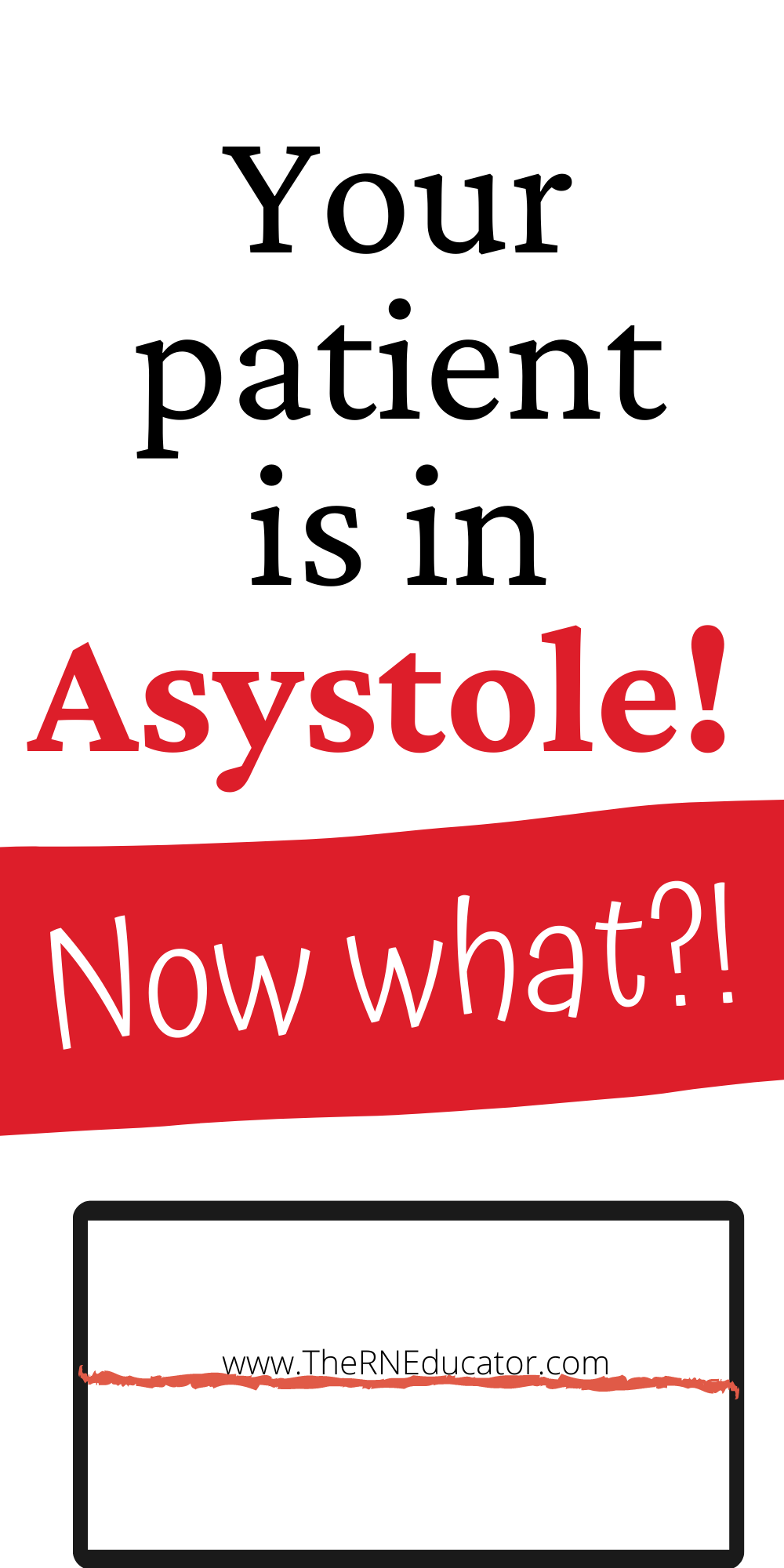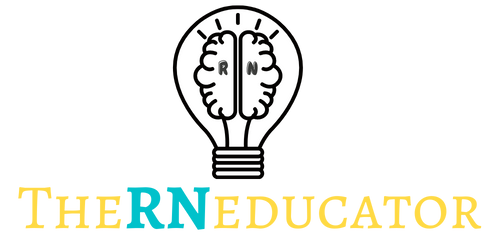Asystole: to shock or not to shock?

Hello my dear nursing friends. Today let’s talk Asystole! 🩺💔 Ever heard of it? I’m sure you have if you are in the medical field or watch ton’s of Grey’s Anatomy (haha). What is it? What does it mean? How do we treat it? and what nursing interventions are carried out? Let’s go!
So… what is Asystole?
Asystole is a “flatline” cardiac rhythm which means EMERGENCY. It is the cessation of all electrical and mechanical activity of the heart. When you see an Asystole ECG it means check your patient (always check your patient first), start compressions and grab that EPI. Let’s talk about it below.

Unlike V-fib or V-tach (other rhythms that are initially treated with defibrillation), asystole does not respond to defib. This is because it is not a shockable rhythm. “What, Jackie? But I thought all rhythms were shockable!!!” Ehhhhh… not really.
In asystole, not only will the cardiac monitor appear as a flat line, the patient will also not have a pulse due to the fact there is no electrical activity going on in the heart. So, you must be asking yourself — “then how do we revive a patient in asystole?” The answer is simple. CPR, CPR, CPR! EPI, EPI, EPI!
Nursing Interventions
Before we deep dive further into asystole treatment let’s talk about the nursing interventions you need to be prepared for.
Grab the crash cart. If a patient is in asystole you are most definitely going to need the crash cart. The crash cart houses anything you need in an emergency situation. This includes emergency medications, intubation supplies and equipment, defibrillator, suction + oxygen, and other emergency supplies as well. Become familiar with your unit’s crash cart location.
Obtain multiple IV access points. Large bore catheters must be place for a patient with any arrhythmia. This is because you will have to infuse many medications, and fluids through these lines. I’ve gone over all the supplies you need to start an IV and tips on how to start an IV here.
You might even have to infuse blood therefore, a large bore such as an 18ga. must be placed. An 18ga. IV catheter is the standard IV catheter size for a blood transfusion.
Multiple IV sites are needed since some medications aren’t compatible with one another or meds and fluids need to be infused simultaneously. The quicker you react in this situation, the better. Time is of the essence with a patient in asystole.
If you cannot obtain multiple access points, you must always FLUSH between each medication to avoid the risk of precipitates. Learn which emergency meds can cause precipitates to occur in an IV line here.
Ambu-bag at bedside. The ambu-bag will help administer oxygen to the patient when you are performing CPR with 2 rescuers. It must be at the head of the bed or behind the bed of the patient at all times during the hospital stay. Always check this when coming on shift.
Suction equipment set up.You will need suction if the patient begins to have excess salivary build up or if an advanced airway will be placed. This should also always be at bedside.
Flatten bed and place backboard underneath patient. To provide effective CPR a backboard must be placed underneath the patient’s back. This will ensure you are giving quality compressions with proper recoil.
My patient is in Asystole… now what?
When you have a patient in a confirmed asystole rhthym there are a few steps that you will follow as per ACLS asystole emergency protocols.
1. Begin CPR immediately. When performing CPR you are essentially providing the heartbeat your body needs to keep blood flowing in the body.
2. Administer Epinephrine. Commonly referred to as Epi, Epi =adrenaline and causes vasoconstriction which increases blood flow to the heart and brain. Remember, Epi is a medication that requires an order from a physician.
A combination of these two will usually restart the heart into a SHOCKABLE rhythm such as v-fib or v-tach. How? Because these two interventions (CPR + Epi) gets the heart beating again. Once a shockable rhythm, such as V-fib or V-tach is obtained and identified, shocking is advised.
Well, my nursing friends. Doesn’t seem as easy as Grey’s Anatomy shows it, huh? A thump to the cheat isn’t what we do in the hospital setting nor is it grabbing the paddles and defibrillating without obtaining a shockable rhythm… (but I still can’t help but watch it! haha.)
So, tell me..
Have any of you ever experienced a patient in asystole?
Share your experiences and any tips for our new nurses below! Make sure to maintain HIPPA compliance.
’till next time,
The RN Educator

Share this:
Related Posts
What’s in a Pediatric Crash Cart? Nursing Students read NOW!
A pediatric crash cart is a mobile unit containing essential equipment and medications required for…
Share this:
How to Become a Confident Nurse
If you are anything like me, and let’s face it (like every nurse…



